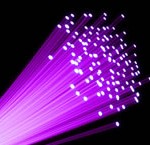
Students and faculty members at Chicago’s Columbia College have to transfer data-heavy files the old-fashioned way: By foot.
The private campus with 12,000 students and 2,000 academic staff in the urban Chicago setting has struggled to bring high-capacity internet bandwidth to its 15 buildings in recent years, leaving students with large video files without a reliable way to share their work over eMail.
Columbia’s technology officials said Oct. 26 that the college would use “dark fiber,” high-speed fiber optic infrastructure already in place underneath Chicago’s streets, to boost the school’s web speeds and allow for enormous files to be easily moved from computer to computer.
Read more about high-speed internet in higher education…
29 universities seek high-speed networks
High-speed internet service to be ‘leveling agent’ for West Virginia colleges
“No one should have to walk anything anywhere,” said Bernadette McMahon, associate vice president and chief information officer at Columbia, which is among the country’s largest art schools. “Our students deserve better. … The majority of our academic programs are digital in nature, and students need to be able to access and move large files over the network.”
Columbia, unlike campuses in sparsely populated rural areas, can’t lay its own fiber network without involving the city, because the web infrastructure would have to be built near and underneath city buildings and businesses.
Dark fiber – already used by schools like Northwestern University – is high-quality fiber optic wire lying dormant, or unlit, until a college or business wants to use it.
“Dark fiber gives us so many more options,” said Richard Piotrowski, Columbia College’s director of IT infrastructure. When the dark fiber network is made live in February, he said, IT officials will for the first time be able to control the network’s bandwidth from a central location.
Columbia’s current internet network is controlled from building to building, Piotrowski said.
And if inclement weather interrupts fiber optic service at a single Columbia campus building, he said, the outage won’t impact the other 14 buildings, as it has before officials considered dark fiber.
“A single point of failure won’t affect the campus as a whole,” said Piotrowski, who worked with service provider CDW-G before committing to the dark fiber network. “It’ll really increase reliability with our network.”
Not even a cut fiber will shut down Columbia’s web connection.
If a wire is damaged or severed, the campus network will automatically reroute computer data around the fiber ring and make sure students and faculty members don’t lose valuable files.
“You have to have that redundancy there in case something happens to the fiber,” McMahon said. “We needed a network that will still have power,” even when underground fiber is damaged by construction, for example.
The Federal Communications Commission (FCC) announced in September 2010 that schools and libraries could use federal technology funds known as the eRate to tap the unused, dark fiber near their buildings.
FCC President Julius Genachowski said last year that schools that use federal money to launch fiber optic networks could make the internet connections available to nearby communities after school hours. The FCC’s dark fiber order is part of the Obama administration’s national broadband plan.
Some school districts could save up to half of what it would cost to hire an Internet Service Provider (ISP) to set up a network, according to FCC estimates.
Higher education’s experimentation with dark fiber networks began in the late-1990s, when research schools, including the University of Maryland, the University of Southern California, and the University of Washington, bought large sections of unlit fiber optics in urban areas surrounding their campuses to connect medical centers to remote buildings.
The universities also used the unused fiber to tie campus networks to city buildings that housed major telecommunications carriers, according to a report published by EDUCAUSE, a nonprofit group that advocates for educational technology.
Northwestern University in 2004 joined 11 partner schools in using the Chicago Fiber Ring, a high-speed fiber optic ring that began as dark fiber.
A dozen Committee on Institutional Cooperation member schools purchased the fiber network and paid about $13.2 million less than if each school had purchased a smaller but similar network on its own.
The EDUCAUSE report warned campus technologists that colleges and universities should act quickly if dark fiber is the best way to bolster campus internet connections.
With “further consolidation within the telecommunications industry, we do not expect that our community will be able to acquire this critical raw material indefinitely,” the report said. “Thus, for the U.S. research universities and their collaborators, time truly is of the essence in developing facilities-based, regional optical networking capabilities.”
- Research: Social media has negative impact on academic performance - April 2, 2020
- Number 1: Social media has negative impact on academic performance - December 31, 2014
- 6 reasons campus networks must change - September 30, 2014
